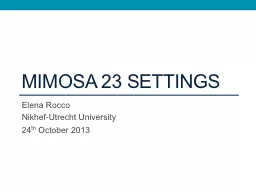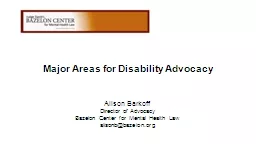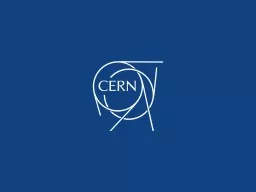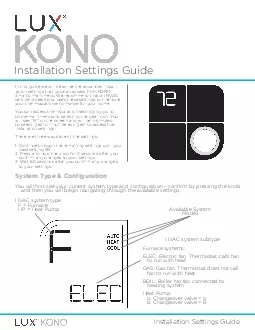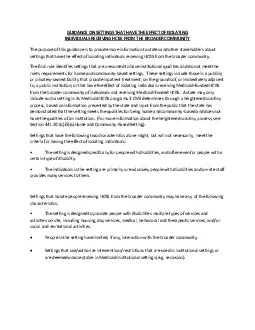PPT-MIMOSA 23 settings
Author : tatiana-dople | Published Date : 2016-05-31
Elena Rocco Nikhef Utrecht University 24 th October 2013 C urrent status Detector in use FoCal prototype 24 layers 96 chips MIMOSA 23 Non uniform response f rom
Presentation Embed Code
Download Presentation
Download Presentation The PPT/PDF document "MIMOSA 23 settings" is the property of its rightful owner. Permission is granted to download and print the materials on this website for personal, non-commercial use only, and to display it on your personal computer provided you do not modify the materials and that you retain all copyright notices contained in the materials. By downloading content from our website, you accept the terms of this agreement.
MIMOSA 23 settings: Transcript
Download Rules Of Document
"MIMOSA 23 settings"The content belongs to its owner. You may download and print it for personal use, without modification, and keep all copyright notices. By downloading, you agree to these terms.
Related Documents

